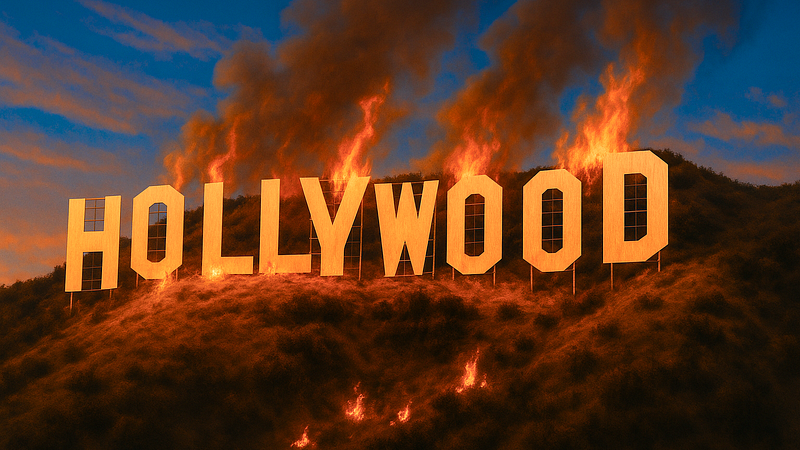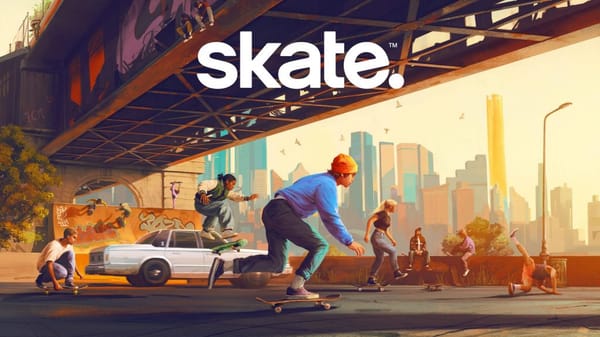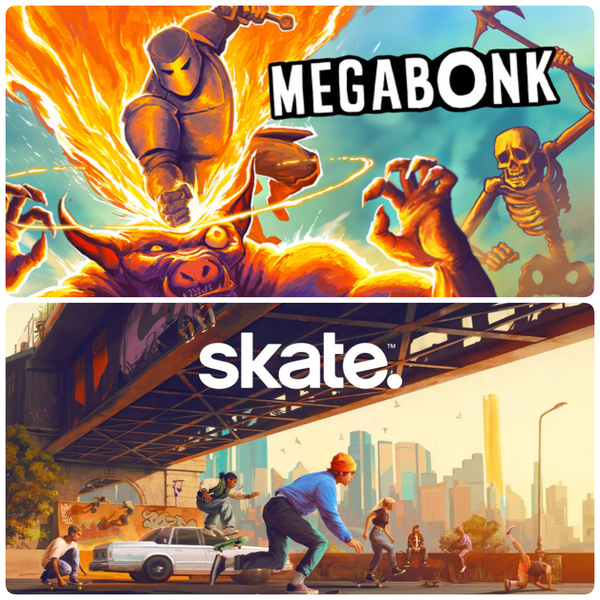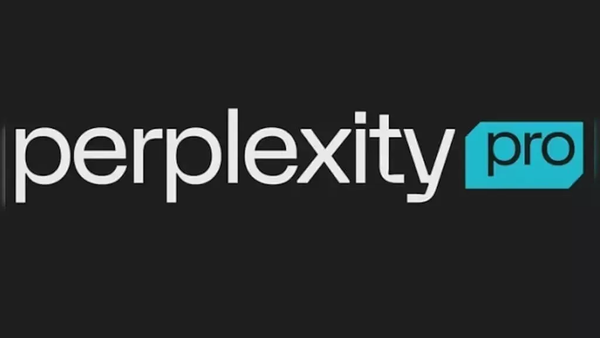The Collapse of Hollywood: How Remakes Are Killing Cinema
Remakes, reboots, rewinds Hollywood’s cash‑grab loop is gutting cinema before our eyes.

Hollywood has spent the last two decades running a recycling business disguised as an art form.
Studio boards don’t ask, “What story should we tell?” They ask, “What logo still has residual goodwill we can cash in on?”
Every green‑light meeting pivots on brand recognition, not creative merit. The result is a conveyor belt of reheated material that dilutes once‑iconic franchises and numbs audiences who keep paying more for less imagination.
Get ready, this article is a long, example‑packed ride through how that mindset poisons the screen.
1. Culture on the Chopping Block
Movies are more than weekend popcorn, they’re the myths we share, shorthand for emotions, and a cultural glue that lets strangers quote the same lines in a bar.
When the industry that curates those myths swaps vision for vending‑machine logic, the damage ripples far beyond the box office.
Every lazy reboot isn’t just a creative misdemeanor; it’s dilution.
The third Fantastic Four (2015) doesn’t merely flop — it muddies whatever love people had for the first one, it tarnishes the name.
Stack enough of those undercooked sequels, spinoffs, and “re‑imaginings,” and the water turns murky: audiences stop trusting the marquee, critics stop caring, and a once‑vibrant art form starts to taste like reheated leftovers.
Hollywood’s accounting trick, writing the same IP until the letters fade, has begun to erode one of society’s main storytelling pillars.
Less curiosity at the multiplex means fewer shared cultural touchstones, fewer debates on the ride home, fewer reasons to gather in the dark and get collectively transported.
If cinema keeps sliding into assembly‑line resale, we risk losing a common language, sacrificed for quarterly returns.
2. The Five Faces of Repetition
Remakes don’t arrive with a neon warning; they hide in four costumes — reboots, spin‑offs, cultural reskins, and game ports.
Each claims to be “new,” but all recycle the same parts. Audiences aren’t asking for reruns; they want forward motion in worlds they already love.
What they’re getting is the same story in fresh packaging.
2.1 Franchise Reboots (Hit reset, pretend it’s fresh)
Fantastic Four (four attempts and counting), Batman (thirteen live‑action swings), Spider‑Man (three complete eras since 2002), Superman (five lead actors since 1978).
These names aren’t random — they’re all gearing up for yet another relaunch. With a new Superman (2025) and The Fantastic Four: First Steps (2025) slated for release in 2025, it begs the question: how many more times do we need to watch the same stories get repackaged and resold?
The rinse‑and‑re‑cast routine never changes. Studios market each wave as “a bold re‑imagining,” but the beats are identical: origin montage, CGI glow‑up, sequel tease.
How many times can one arc survive a rewrite? In the superhero arena, the answer is “as long as the multiverse exists.”
New timelines mean no character risk, no real consequence — just infinite do‑overs that bleed audience investment dry. The more they reboot, the less anyone feels the stakes.
2.2 Spinoffs & Universe Expansions (Side quests nobody asked for)
It’s one thing to expand a world; it’s another to strip it of its core and expect fans to stay invested.
Sony’s Morbius, Madame Web, and Kraven the Hunter are the trilogy of infamy — Spider‑Man spinoffs without Spider‑Man, and audiences rejected all three.
As expected, all three were critically panned and commercially irrelevant.
Studios now view any success — film or series — as seed stock for an assembly line of offshoots. The pattern is simple: lift the brand name, drop the core character, repeat until the timeline collapses.
Movie‑to‑movie pipelines
- Harry Potter → Fantastic Beasts (2016), Fantastic Beasts: The Crimes of Grindelwald (2018), Fantastic Beasts: The Secrets of Dumbledore (2022)
- Suicide Squad (2016)→ The Suicide Squad (2021), Birds of Prey and the Fantabulous Emancipation of One Harley Quinn (2020)
- Rocky → Creed, Creed II, Creed III
Movie‑to‑show pipelines
- The Batman → The Penguin (2024), Gotham (2014), Gotham Knights (2023), Batwoman (2019)
- The Suicide Squad → Peacemaker (2022)
- John Wick → The Continental (2023)
Show‑to‑show proliferation
- The Big Bang Theory (2007) → Young Sheldon (2017) → Georgie & Mandy’s First Marriage (2024)
- How I Met Your Mother (2005) → How I Met Your Father (2022)
- The Walking Dead (2010) → Fear the Walking Dead (2015), The Walking Dead: Dead City (2023), The Walking Dead: Daryl Dixon (2023)
Each spin‑off promises “fresh perspective,” yet most rehash the same beats while ping‑ponging across timelines so often that viewers need flowcharts just to follow along.
The X‑Men saga is a textbook casualty: original trilogy, prequel trilogy, soft reboot, multiverse tease, MCU reboot in the pipeline — stake erosion at every turn.
And then there’s Star Wars, the undisputed champion of brand stretch.
What began as a tightly‑woven space opera is now a maze of prequels, sequels, animated detours, and live‑action side quests spanning centuries with no canonical map.
A once‑beloved franchise reduced to a content farm — valuable logo, diluted soul.
2.3 Animation‑to‑Live‑Action Replays (When magic turns mechanical)
Disney perfected the formula: lift an animated classic, swap cel‑shading for photoreal CG, and market nostalgia as novelty. The creative return is near‑zero, the box‑office haul often colossal.
- The Lion King (2019) — Shot‑for‑shot realism that drained the original’s emotion.
- Aladdin (2019) — Bright colors, flat charm.
- Mulan (2020) — Stripped of songs and spirit, it underperformed globally.
- Pinocchio (2022) — Skipped theaters, fizzled on streaming.
- The Little Mermaid (2023) — Solid vocals, same story, modest box office.
- Snow White (2025) — Early screenings label it “the worst Disney film ever.”
Minimal story change, maximal profit motive — proof that brand loyalty still sells tickets.
The Little Mermaid (2023) courted headlines for race‑swapping Ariel while hitting every familiar plot beat.
Snow White (2025) went further, rewriting its own “fairest of them all” premise and sinking to a record‑low 1.6‑star IMDB rating, now cited as the worst Disney film ever made.
If the goal is to strip out the core that made a classic resonate, why cling to the title at all? Either tell a new story or leave the original untouched.
2.4 Cultural Lift‑and‑Flips (Import, sand off the edges, resell)
Hollywood keeps strip‑mining foreign standouts, sanding off subtitles, and selling the shells back as “new.” The track record is mostly embarrassment:
- Oldboy (2013) — Spike Lee’s remake of Park Chan‑wook’s 2003 classic gutted the story’s savage poetry and crashed at the box office.
- The Ring (2002) — Lifted from Japan’s Ringu (1998); a hit, but it opened the floodgates for limp J‑horror retreads like The Grudge (2004) and Dark Water (2005).
- The Departed (2006) — Scorsese’s take on Hong Kong’s Internal Affairs (2002) won Oscars, proving even the success cases lean on borrowed blueprints.
- Let Me In (2010) — A scene‑for‑scene U.S. pass at Sweden’s Let the Right One In (2008); critical nods, soft box office.
- The Girl with the Dragon Tattoo (2011) — Fincher’s frame‑perfect copy of the Swedish original; competent, redundant.
- The Upside (2019) — A glossy echo of France’s The Intouchables (2011), stripped of bite and nuance.
The pattern: buy a foreign gem, dilute the flavor, and hope Western audiences won’t notice the aftertaste. It’s lazy, unimaginative, and usually unnecessary — people can read subtitles.
2.5 Game‑to‑Screen Cash‑Ins (Pixels to popcorn)
Hollywood once treated game adaptations as throw‑away experiments — Prince of Persia: The Sands of Time (2010), Warcraft (2016), and other early tries barely registered. A new wave flipped the script:
- Sonic the Hedgehog (2020) — Fan backlash to an off‑model design forced a full CG redesign; the fix delivered a $319 M haul and green‑lit a franchise.
- The Super Mario Bros. Movie (2023) — Celebrity voice casting drew side‑eye, but nostalgia crushed doubt: $1.36 B worldwide.
- The Last of Us (2023 — ) — HBO’s series lifted scenes straight from the game, added fresh angles, and landed prestige‑TV buzz despite casting grumbles.
- A Minecraft Movie (2025) — Sandbox with no native plot, re‑imagined as a family adventure; broke opening‑weekend records yet stalled in the low‑50s on Rotten Tomatoes.
The common thread is a built‑in fan wallet, but the margin for error is thin. Stick too close to the source and you’re filming cut‑scenes; veer too far and loyal players walk.
Whether this branch becomes Hollywood’s next cash cow or flames out like earlier fads depends on how long brand recognition can carry mediocre storytelling.
3. Franchise Fatigue: When the Well Runs Dry
- Dracula: the record nobody asked for — 155 feature outings and counting. What can a 156th version possibly add? The material is bled dry; each new attempt is a weaker echo of the last, proof that over‑exposure kills curiosity.
- Snow White: the cautionary face‑plant — Disney’s 2025 live‑action entry sits at a 1.6‑star IMDB rating, the worst in the studio’s history. Retooling beloved folklore for “modern audiences” pleased no one and burned brand equity in the process.
- ROI slide: dollars tell the same story
- Godzilla × Kong (2024) pulled roughly 2× its reported production budget; the 1933 King Kong cleared 57×. Same monster, 90 years of diminishing returns.
- Transformers: Rise of the Beasts (2023) grossed $439 M on a $195 M budget (≈2.2×). The 2007 original managed $709 M on $150 M (≈4.7×). Familiar robots, shrinking margins.
Why it matters to the audience: Repetition numbs stakes and drains anticipation.
The more studios recycle, the harder it becomes to convince viewers that any chapter is essential viewing.
Ticket buyers tune out, discourse dries up, and the theater experience moves closer to background noise. A medium built on wonder risks becoming white noise.
4. What Audiences Want: Growth, Not Re‑Runs
Viewers aren’t allergic to sequels or returning worlds — they’re allergic to narrative wheel‑spinning. When a franchise moves forward, deepens its lore, and eventually bows out, audiences stay on board. When it rewinds or stalls, fatigue sets in.
4.1 Linear Runs That Stuck the Landing
- Harry Potter (2001‑2011) — Eight films, single coming‑of‑age arc, no reboots.
- The Lord of the Rings Trilogy (2001‑2003) — Complete hero’s journey; epic, finite.
- Dune (2021) & Dune: Part Two (2024) — One novel, two films; scope expanded without retconning. With last installment is set to release in December 2026 for what is supposed to be the third and final entry in the series.
4.2 Digging Back Into the Well: Signs of Desperation
- Fantastic Beasts Series — Warner tried to extend Harry Potter; a five‑film plan was cut short at three after diminishing returns.
- The Rings of Power (2022– ) — Massive budget, tepid engagement; prequel without fellowship stakes.
- John Wick Universe — The Continental: From the World of John Wick (2023) underwhelmed; upcoming From the World of John Wick: Ballerina (2025) will show whether the brand can live without Wick or if this is cash‑grab territory.
4.3 Late‑Return Success Stories
- Avatar (2009) → Avatar: The Way of Water (2023) — Thirteen‑year gap, record box‑office, forward narrative.
- Blade Runner (1982) → Blade Runner 2049 (2017) — Three‑decade jump, thematic expansion respected the original.
- Unbreakable (2000) → Split (2016) → Glass (2019) — Surprise universe reveal paid off because each instalment added perspective rather than resetting stakes.
4.4 Spinoffs Done Right
- Rocky → Creed Trilogy (2015‑2023) — Shifted focus to a new generation while honoring legacy.
- The Hobbit Trilogy (2012‑2014) — Prequel journey that broadened Middle‑earth without erasing LotR continuity.
4.5 When the Engine Sputters
- Transformers — Spectacle plateaued; ROI halves with each sequel.
- Fast & Furious — Physics‑defying antics rising; cultural relevance dropping.
- Mission Impossible — Still profitable, but critical buzz slipping; stunts overshadow the story.
4.6 Know When to Park the Ark
- Indiana Jones and the Dial of Destiny (2023) — Nostalgia couldn’t overcome fatigue; some legends deserve a graceful farewell.
Stories thrive on shape: a clear beginning, a middle that raises stakes, and an end that lands the punch.
Stretch that arc into an endless loop, and the tension evaporates.
The longer a franchise circles itself, the more the original spark is watered down until the logo is all that’s left.
Growth outward keeps a universe alive; repetition inward buries what once made it matter.
5. Proof of Life: Sinners (2025) and the Power of New IP
Sinners isn’t just a fluke — it’s a statement. An original thriller with no franchise ties, no rebooted branding, and no reliance on legacy characters opened to over $500 M globally, out‑grossing every reboot on the 2024 calendar. And it did it with half the marketing budget and a 93 % critic score.
The message is clear: originality isn’t dead, it’s starving.
Audiences aren’t opposed to franchises. They’re opposed to stagnation. Sinners (2025) offered something new, and people showed up. After years of creative bankruptcy, this kind of success feels like a shimmer of hope.
It’s not just a win for one film, it’s proof that the appetite for new ideas is still alive and growing. If studios don’t learn from this, they’ll be left behind by their own audiences.
This isn’t the exception that proves the rule. It’s the rule, restated with fire: give people something worth caring about, and they’ll care.
Sinners (2025) is a pulse check — and Hollywood should be listening.
Audiences rewarded novelty — and they’ll keep doing so, as long as the industry meets them with fresh ideas instead of recycled formulas.
Sinners isn’t just a hit; it’s a line in the sand, proving once and for all that original IP still wins when it’s given the spotlight.
I’ll unpack its story craft, cultural impact, and what its breakout means for cinema in an upcoming in‑depth review — link to follow.
6. Conclusion: Do Better, Hollywood
Remakes aren’t the villain — Jurassic Park (1993) found new teeth in Jurassic World (2015), Creed carried Rocky’s torch, and Avatar: The Way of Water (2022) proved a decade‑old universe can still evolve.
But these are the exceptions that highlight the rule. The bulk of Hollywood, led most loudly by the superhero machine, defaults to rinse‑and‑reuse, betting that nostalgia will conceal shortcuts.
It doesn’t — laziness on a grand scale is impossible to hide.
Great cinema has never been about perfect bets or nine‑figure VFX.
The Shawshank Redemption (1994), Inception (2010), Interstellar (2014), Fight Club (1999), The Wolf of Wall Street (2013), The Godfather (1972), Forrest Gump (1994), La La Land (2016), Hidden Figures (2016), Everything Everywhere All at Once (2022)— none of them walked in with pre‑sold logos, and all became cultural fixtures because they trusted bold ideas and the audience’s appetite for them.
We singled out standout cases in this paper not to cherry‑pick, but to keep the argument focused: overexposure, not sequels themselves, kills wonder.
So here’s the ask: spend less on reheating and more on cooking. Let creatives take swings, let franchises rest when the story is told, and trust that viewers will reward genuine risk over polished repetition.
Hollywood doesn’t need bigger budgets or greener screens; it needs courage. The crowd is still here, tickets in hand — give them something they haven’t already seen.



